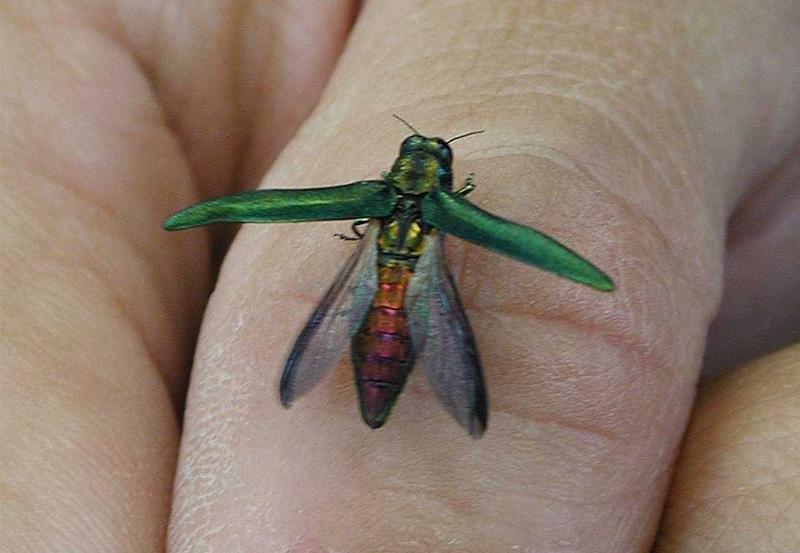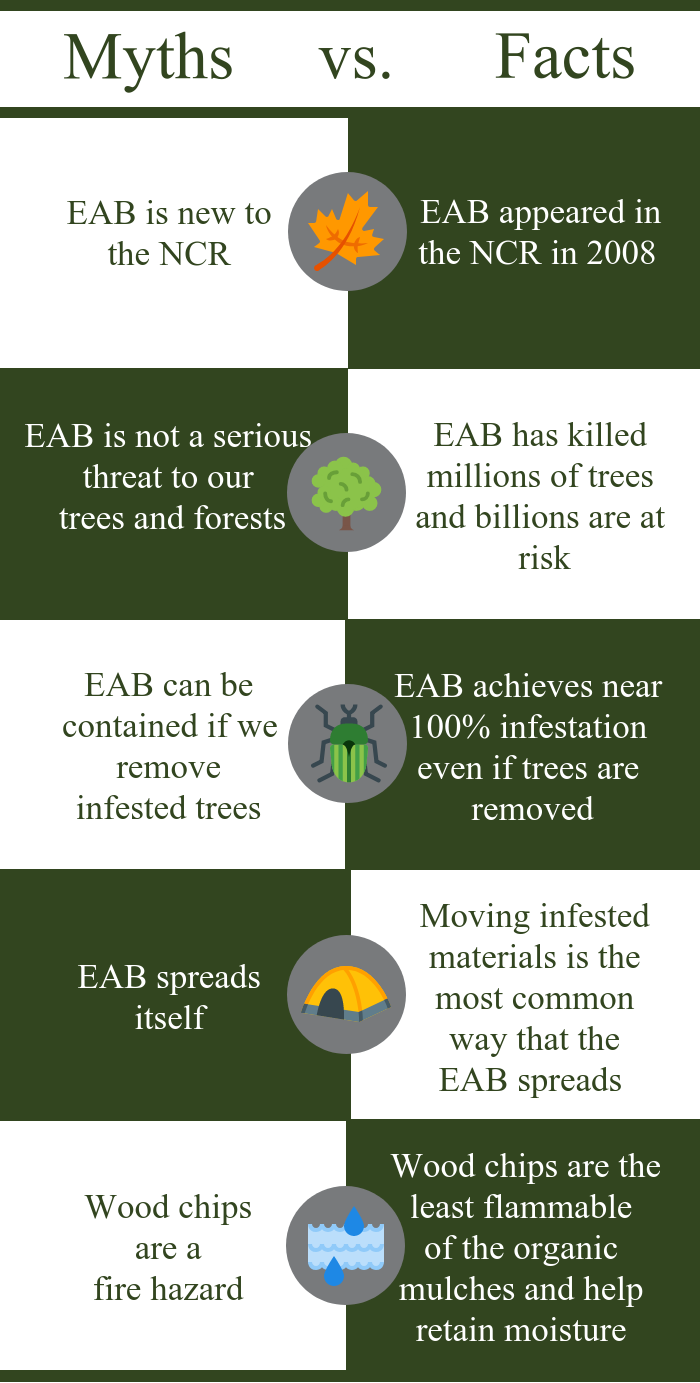
The emerald ash borer is a highly destructive insect that was first discovered in Canada in the summer of 2002. Its presence in the National Capital Region was detected for the first time in 2008, and the NCC’s management efforts began in 2009.
This insect has killed millions of ash trees in Canada and the United States, and poses a major economic and environmental threat to urban and forested areas in both countries. The impact of tree mortality has been devastating to the local tree cover, especially in areas where the density of ash trees is high.
In the National Capital Region, ash is a prolific native species that grows in many environments, including naturalized and more managed park environments.
Managing emerald ash borer
The majority of the ash trees on NCC lands have been affected by the emerald ash borer. In 2018–2019, the NCC will be allocating over $3 million toward effective management of the emerald ash borer, bringing the total invested over the past decade to more than $8 million.
In working to find the best balance between conservation and health and safety, we have undertaken the following actions to address the impacts of the emerald ash borer.
- Over the short term, health and safety concerns require the removal of dead and fallen trees on our more frequented sites, especially those trees that are within one tree length of pathways, trails, roadways, and near other assets.
- While taking into consideration environmental regulations (including bird nesting periods), and to reduce damage to ground cover by large equipment, the NCC aims to remove trees in the late fall and over the winter months.
- Since 2014, yearly tree cutting has been carried out on NCC land due to the emerald ash borer. In the coming years, we anticipate having to cut down tens of thousands more trees.
Addressing the threat of invasive alien species is an important aspect in the management of the emerald ash borer. The NCC’s projects are based on three areas of action in the fight against invasive alien species:
- Preventing the introduction of harmful plants on NCC lands.
- Detecting invasive alien plants and taking quick action.
- Managing invasive alien plants that are already established or spreading on NCC lands.
For more information, please click on this link.
- In more dense forested areas such as Gatineau Park and the Greenbelt, dead trees are for the most part left to decay, and removals are undertaken when the trees pose a health and safety risk.
- Debris from tree removal is managed in a variety of ways, depending on the volume of trees and access to the site.
- In keeping with industry practice and environmental regulations, wood is either removed or mulched on-site and then spread. This is also conducive to preserving and protecting wildlife habitat. Often, a combination of approaches will be used.
- Mulch is sometimes used to create rings around newly planted trees in order to retain moisture and help growth
- Over the long term, the NCC will continue its re-greening strategy with the replanting of a variety of tree species. One tree will be replanted for every tree that is removed due to the emerald ash borer.
- Trees have been planted every year since the beginning of the NCC's emerald ash borer management plan in 2009.
- Parks with high volumes of ash trees were targeted for intense replanting following the completion of removal work.
- To minimize negative impact, replanting is done once the ground has dried. The NCC works with partners such as Tree Canada, the Rideau Valley Conservation Authority and other volunteer groups in the replanting of trees.
- The NCC undertakes outreach activities with community organizations before beginning any work to ensure that citizens are kept informed.
- Stay informed by signing up for our newsletter. In some cases, signage is used to advise citizens of upcoming work.
- Questions or concerns can be directed to the NCC's client services at 613-239-5000 or info@ncc-ccn.ca.
- Stay connected by following us on Facebook, Twitter, Instagram and Youtube.


Help limit the spread of the emerald ash borer
- Do not move any firewood any significant distance.
- When camping or at a cottage, buy your firewood locally, and burn it all before you leave.
- Report suspected emerald ash borer infestations or outbreaks to the Canadian Food Inspection Agency at 1-866-463-6017.
More information
Residents of the Capital Region can also find more information on these websites: